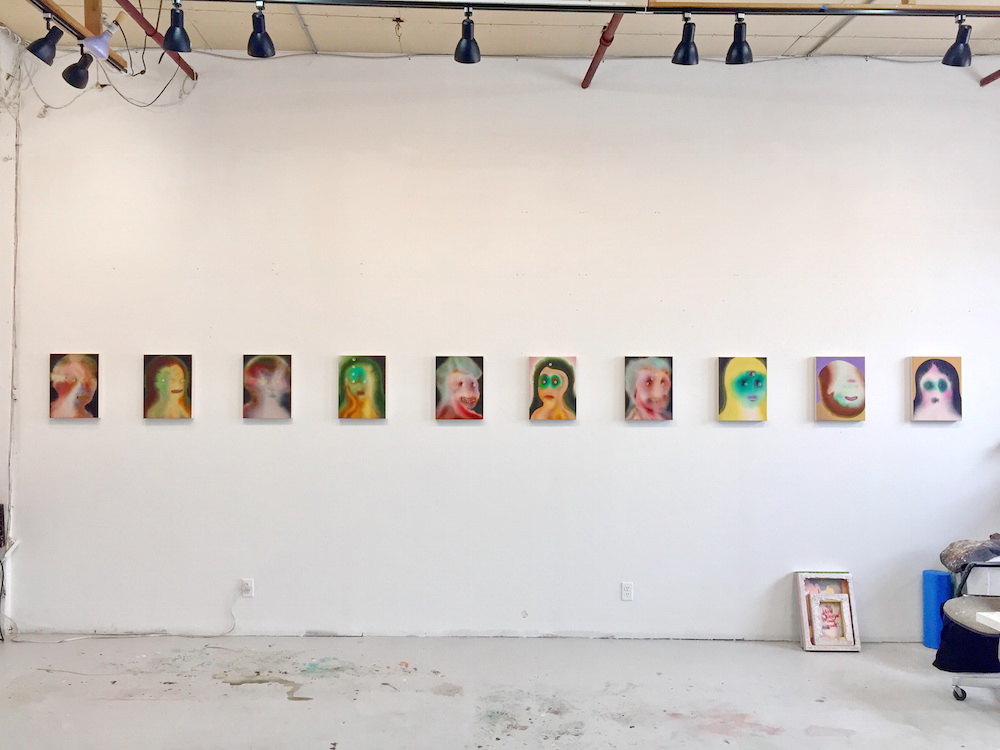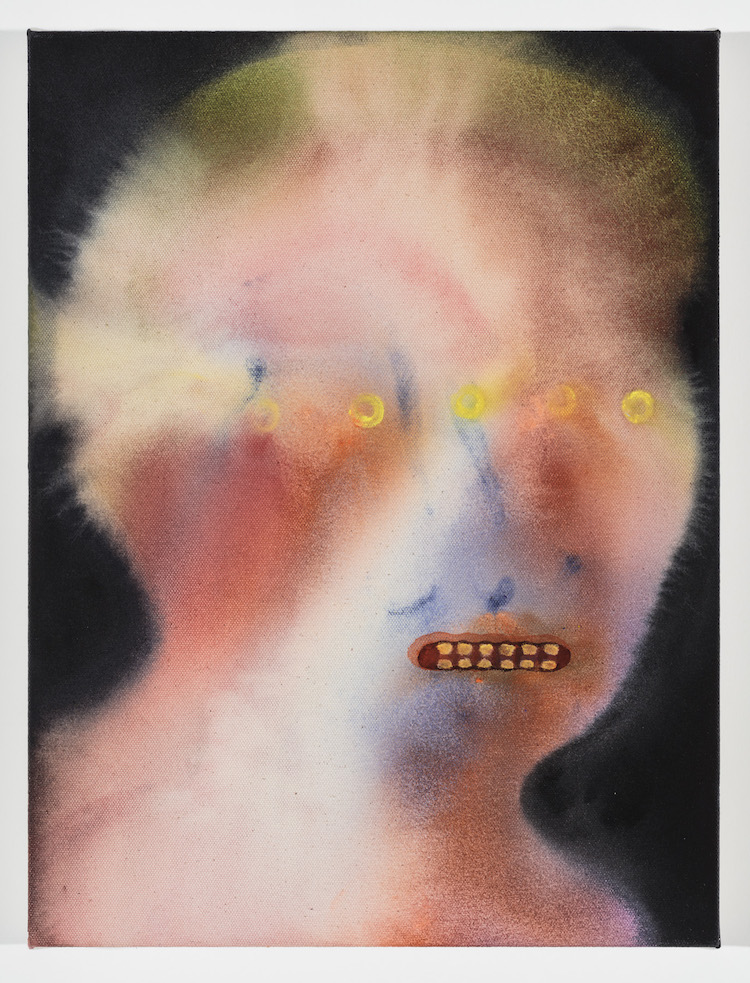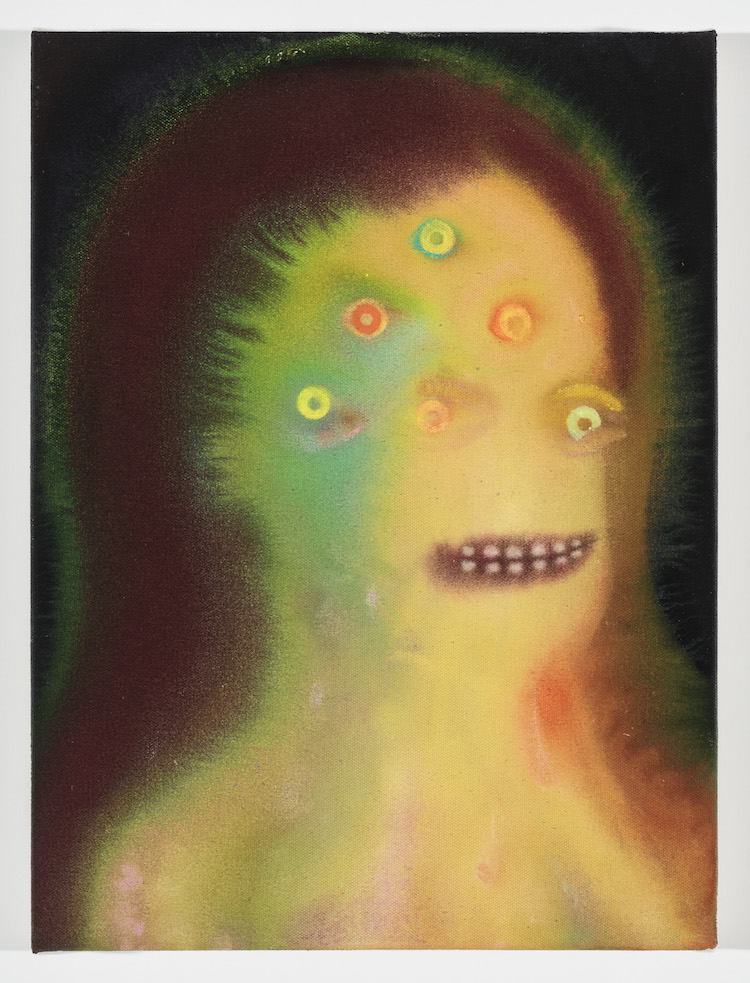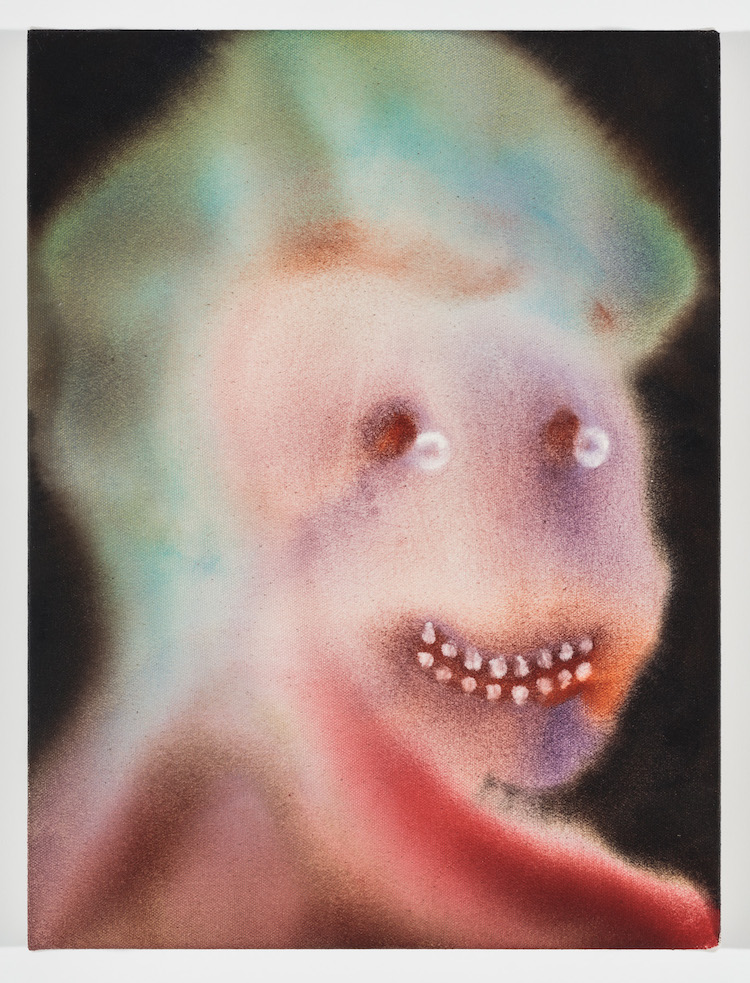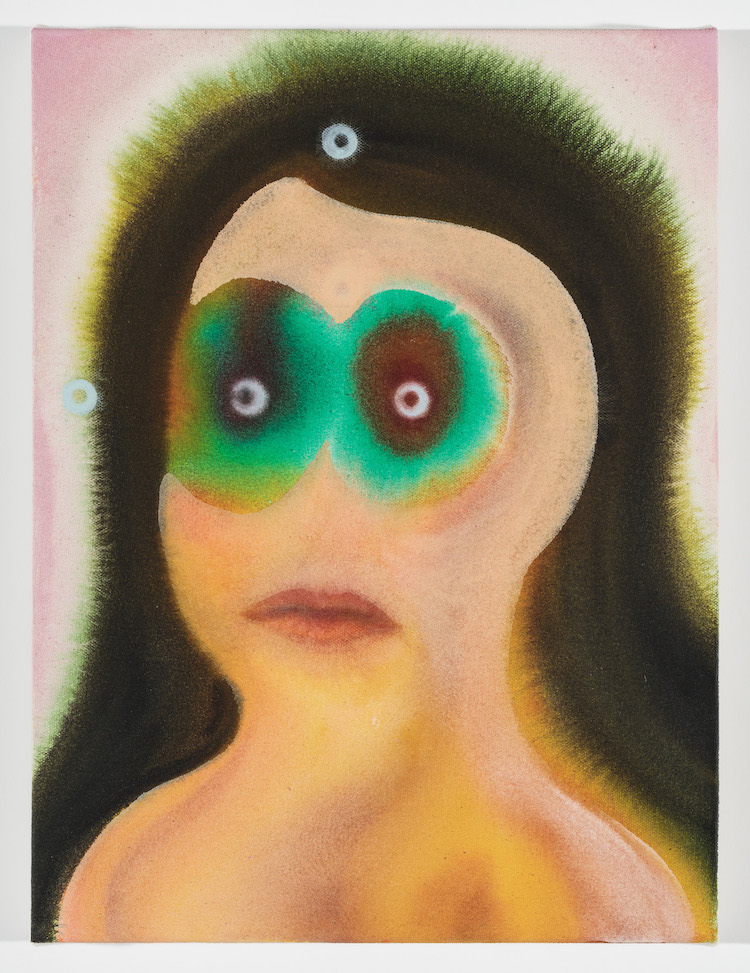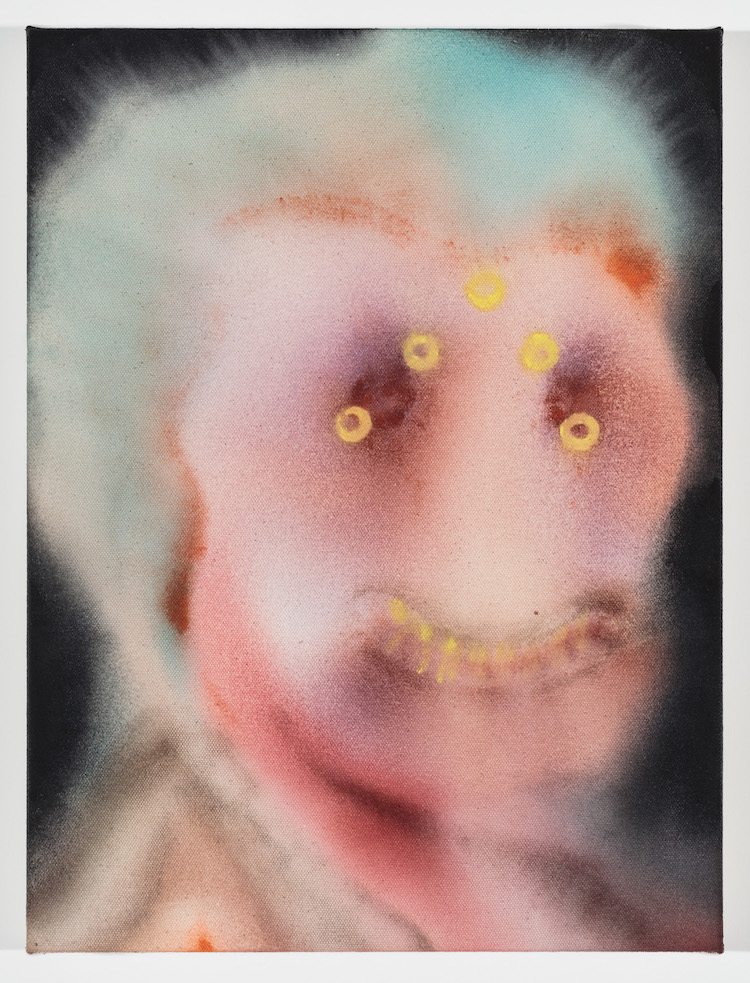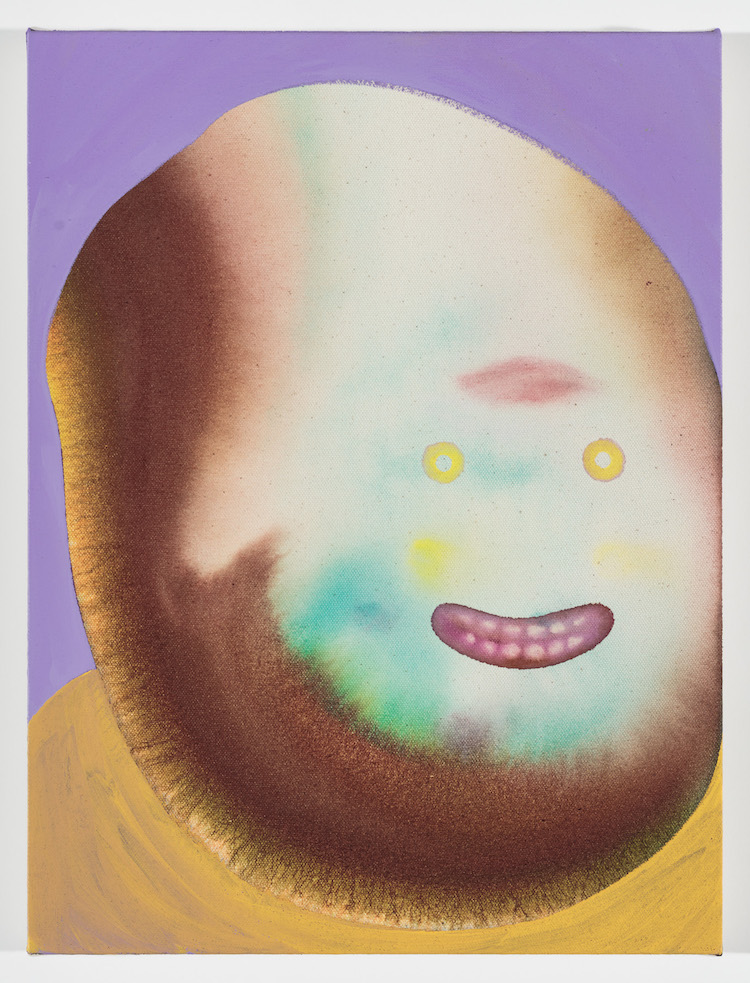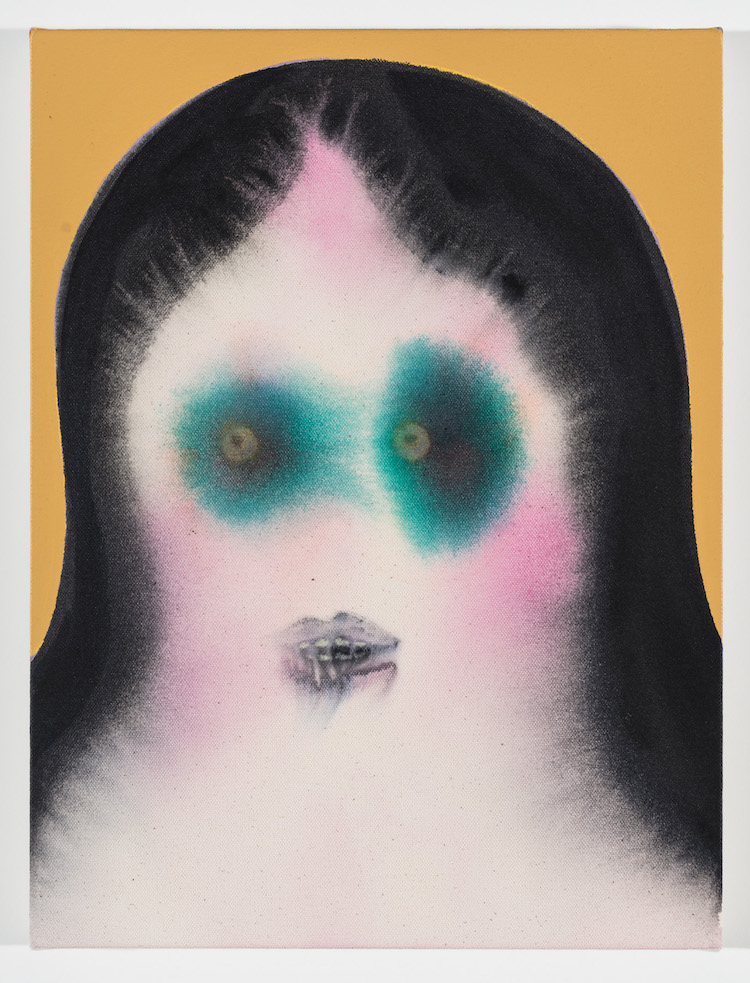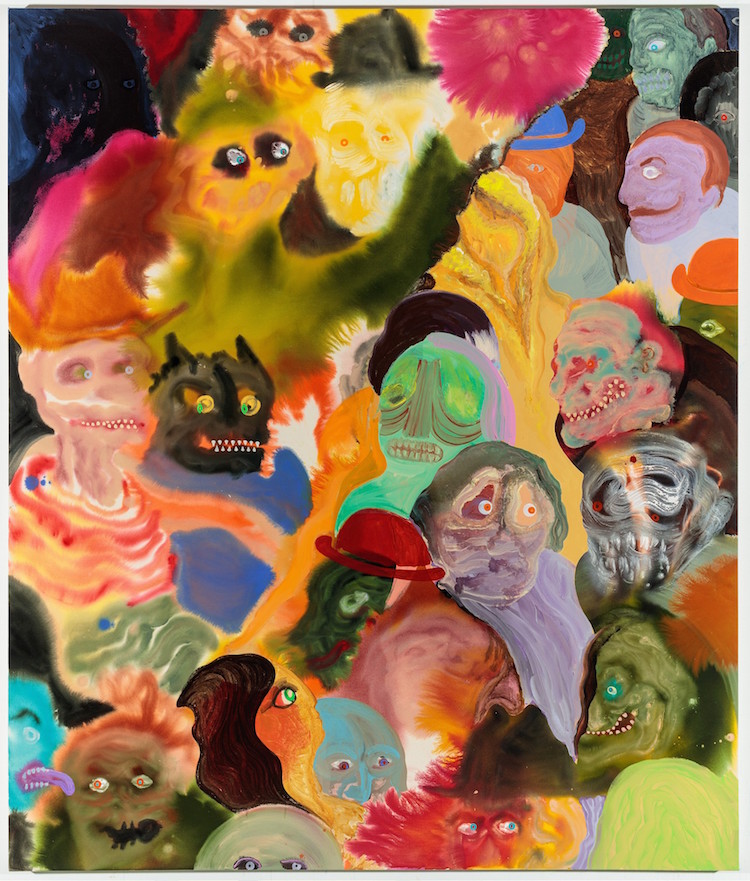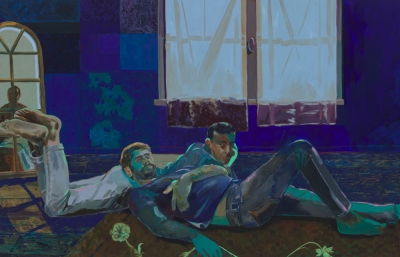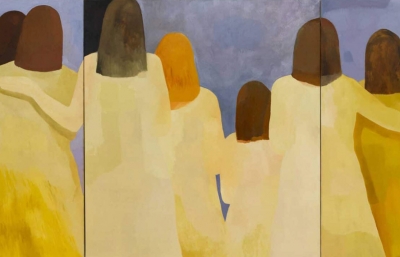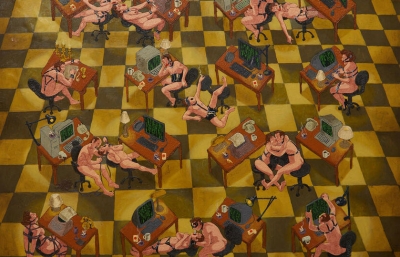Back in February 2019, we visited Aaron Johnson's Brooklyn studio to get a closer look at his paint-stained body of work made for a solo show in Copenhagen and duo in NYC with Christian Rex Van Minnen. Now focusing on single portraits rather than group images, Johnson's latest series debuts in a solo presentation at Over The Influence Gallery's booth at the Seattle Art Fair August 1st through the 4th. We got in touch again to talk about this newest offering and the ways his practice has evolved to this point.
Sasha Bogojev: When did you start working on new singular portraits?
Aaron Johnson: When I came back from a show I had in Hong Kong last fall, my studio was pretty empty, and I had a random small stretcher laying around. I didn't have a plan in mind, and I intuitively made the first one of these little portraits. I was startled by the result. It seemed like an apparition had manifested into the portal of the canvas.
One thing I noticed was the multiple eyes, which seem to be a recurring element. What attracts you to that motif?
I like to imagine ethereal beings that perceive more than we can, more eyes to see into other dimensions, maybe. I think that's something we do as artists, we try to visualize more in our paintings than we see in our daily lives, or we seek a state where more doors of perception are open. Equally true, even though it seems contradictory, is that the eyes are not eyes at all. They are abstractions, clean geometric little circles, and there's an abstract logic to arranging these forms.
Do any of these portraits, in some way, represent specific people?
They don't, but I have been playing with an idea that imagines specific personas. So titles, like Big Time Bobby, Teresita Miranda, Watcher of Tears, Good Vibes Charlie or Samantha Whose Song Was An Anthem, I think of as spirit portraits. I title the painting after it is finished, by sitting with it, imagining who was the person before she became this ghost?

Who are your artistic influences, especially in reference to these works?
I'm influenced by many figurative painters such as Peter Saul, The Hairy Who, Kirchner, Ensor, etc. Putting figurative language aside and focusing on just materiality, my process draws directly from Color Field painting and the likes of Morris Louis and Helen Frankenthaler, the first to work with stains of color into raw canvas. I share the same interests as the movement: pigment soaking into the canvas, the emotional impact of pure color, and soft edges and luminous blurs. I think about Hilma af Klint, specifically how she channeled spirits to guide her painting.
What's your process like, how much control do you have?
I paint on raw canvas with watered down fluid acrylic. The canvas is flat on the floor for stain work. I have a very loose relationship with control in this process. I can go in with a general idea of color and form, but the paint bleeds and spreads in ways that are always unpredictable.
How did it feel at first, moving onto such an uncertain technique, and what made you stick with it?
The first time I worked this way felt like a sort of strange magic. The intelligence of the paint seemed to be guiding the work as much as my own decisions. I arrived at the loose freedom and spontaneity I had been seeking for a long time, something I admired in more expressionist painters when my work was tighter and more restrained. I find a good balance between abstraction and figuration in this process, and I consider these paintings to be just as abstract as they are representational. In that sense, it felt good to get away from the representational specificity of earlier works, to get into a free-flowing figurative dynamic.

Did you have to develop special tools to achieve this?
I use long pool cues as handles for my paintbrushes. There was a dusty bundle of ancient pool cues stashed on top of my studio bathroom. Painting with a long stick allows me to stand above the canvas and see what I'm doing from a good viewing distance, instead of kneeling or crawling around on the canvas.
How often do you realize the work just isn't developing and you must start over? What factors help to decide that?
Maybe one out of four canvases gets flipped and starts over. If I don't see something really exciting after the first passage of stains, I know I'm better off starting over. The first passage is when the canvas is completely absorbent to the stains and, in all the later moves, the paint acts differently. I get a chance at the deep and lush bleeds absorbing into the raw canvas only in that first passage.
So, are you finished with other techniques or are they on hold for now?
I'm in a real sweet spot, feeling completely obsessed with this way of working, and all engines are firing in this direction.

And what is it about crowd scenes that you find compelling?
I don't see these paintings as crowd scenes exactly, but rather gatherings in the realm of collective consciousness. The paintings are an investigation into interconnectedness. They are not literally "crowds" the way we think of them on city sidewalks or stadium audiences, because I don't see these scenes as occurring in our physical world. The world in these paintings is maybe subconscious, imagined, or metaphysical, some kind of spirit realm. A psychedelic mystical place.
Would you say you're a spiritual person, and do you believe in ghosts?
I don't believe in ghosts, but I do think it's fascinating to think about why so many people do believe in ghosts. What is it about us, psychologically, that needs to believe in souls persisting in some kind of afterlife? To me, that's very fascinating. I'm curious about our tendencies to believe in a spiritual dimension “on the other side” of our physical reality. To me, it's all a mystery, but I can only really believe in what I can back up with experience. I think we are spiritual beings right here and now, on this earth. I feel it in daily moments with loved ones, moments getting lost in the sublime of nature, and also getting “in the zone” of painting.
What type of atmosphere do you look for in your work?
The atmosphere of seeing a Rothko painting and a Peter Saul painting melding together in another galaxy.
Aaron Johnsons's solo show debuts at Over The Influence Gallery's Booth at the Seattle Art Fair from August 1st, through August 4, 2019.

